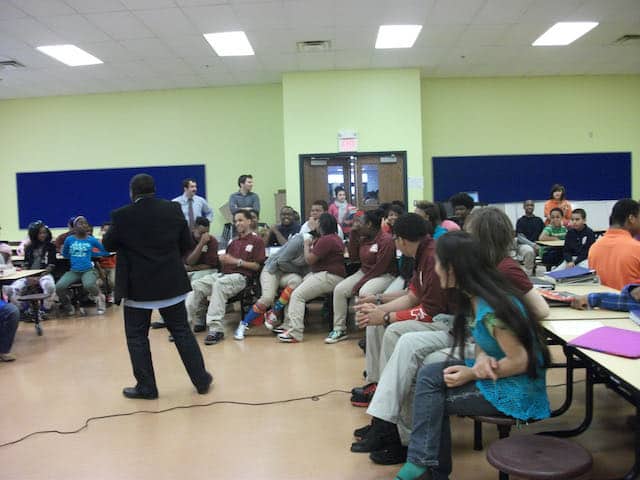5 Things You Should Do If You Know a Student Is Suffering from Depression | By Youth Speaker Jamahl Keyes – The Magic Motivator
Table of Contents
ToggleSeptember is Suicide Prevention Month, a time to shine a light on one of the most difficult yet critical conversations we can have with our youth. As a Youth Speaker and The Magic Motivator, I’ve spent years standing on school stages across the country talking to teens about tough subjects like depression and suicide.
But here’s the truth: talking about suicide doesn’t have to be scary—it has to be real, engaging, and hopeful. That’s why I use magic tricks to capture students visually, real-life stories to connect emotionally, and comedy to make tough subjects easier to digest. The combination allows me to break through walls of silence and open doors to conversation.

According to the CDC, suicide is the second leading cause of death among young people ages 10–24. Even more alarming, 1 in 6 high school students reports having seriously considered suicide in the past year (CDC, 2023). These numbers aren’t just statistics—they’re cries for help.
If you know a student or teen who may be suffering from depression, here are five things you can do that may save a life:
1. Listen Without Judgment
One of the most powerful tools you can give a teen is your ear. When a young person shares their feelings, resist the urge to fix or minimize. Instead, provide a safe space.
💡 Tip: Listening is often more powerful than speaking
📊 Stat: 90% of people who die by suicide have underlying mental health conditions, and many share warning signs beforehand (NAMI).
2. Ask Directly About Suicide
It’s a myth that talking about suicide plants the idea in someone’s head. Asking shows you care and that you are not afraid to have the conversation. Use clear, compassionate language: “Are you thinking about hurting yourself?”
📊 Stat: Teens who are asked about suicide directly are more likely to open up and seek help, reducing their risk (American Foundation for Suicide Prevention).
3. Encourage Professional Help
Friends, teachers, and parents are important—but professional support saves lives. Encourage counseling, school psychologists, or helplines. Share resources like the 988 Suicide & Crisis Lifeline.
📊 Stat: 75% of teens who receive proper therapy show improvement in their symptoms of depression and anxiety (APA).

4. Remove Stigma Through Connection
This is where I bring in magic, comedy, and storytelling. By creating an environment where laughter and amazement open the door, I help students feel less alone and less ashamed of their struggles. You can do the same by talking openly about mental health and normalizing the conversation.
📊 Stat: Students are 40% more likely to seek help when their school provides open conversations about mental health (Mental Health America).
5. Stay Connected and Follow Up
Depression is not a one-time conversation. Keep checking in—send a text, call, or simply ask, “How are you doing today?” Sometimes, the small gestures are the biggest lifelines.
📊 Stat: Consistent follow-up contact reduces suicide risk by 30% (Journal of Crisis Intervention and Suicide Prevention).

Why Magic, Comedy, and Real Stories Work
When I step onto a school stage, I’m not just performing tricks. I’m creating visual metaphors—a torn and restored card becomes a symbol of healing, a locked box represents hidden struggles, and laughter reminds students they’re not alone.

These creative approaches don’t trivialize the subject—they make it human, digestible, and unforgettable. Students walk away with hope, with tools, and most importantly—with the knowledge that their lives matter.
Final Word: You Can Make a Difference
If you know a student suffering from depression, you have the power to step in. You don’t need to be a magician, a comedian, or even a professional speaker. You just need to show up, listen, and guide them toward help.
Let’s use this Suicide Prevention Month to break the silence, end the stigma, and remind every student that their story isn’t over.
👉 If you’re a school administrator, teacher, or youth organization leader in Indianapolis or surrounding areas, visit TheMagicComic.com/indianapolis-school-assemblies to learn how Jamahl Keyes – The Magic Motivator can bring life-saving conversations to your students in a way that’s engaging, impactful, and unforgettable.
Resources:
- 988 Suicide & Crisis Lifeline: https://988lifeline.org/
- National Alliance on Mental Illness (NAMI): https://www.nami.org/
- American Foundation for Suicide Prevention: https://afsp.org/




